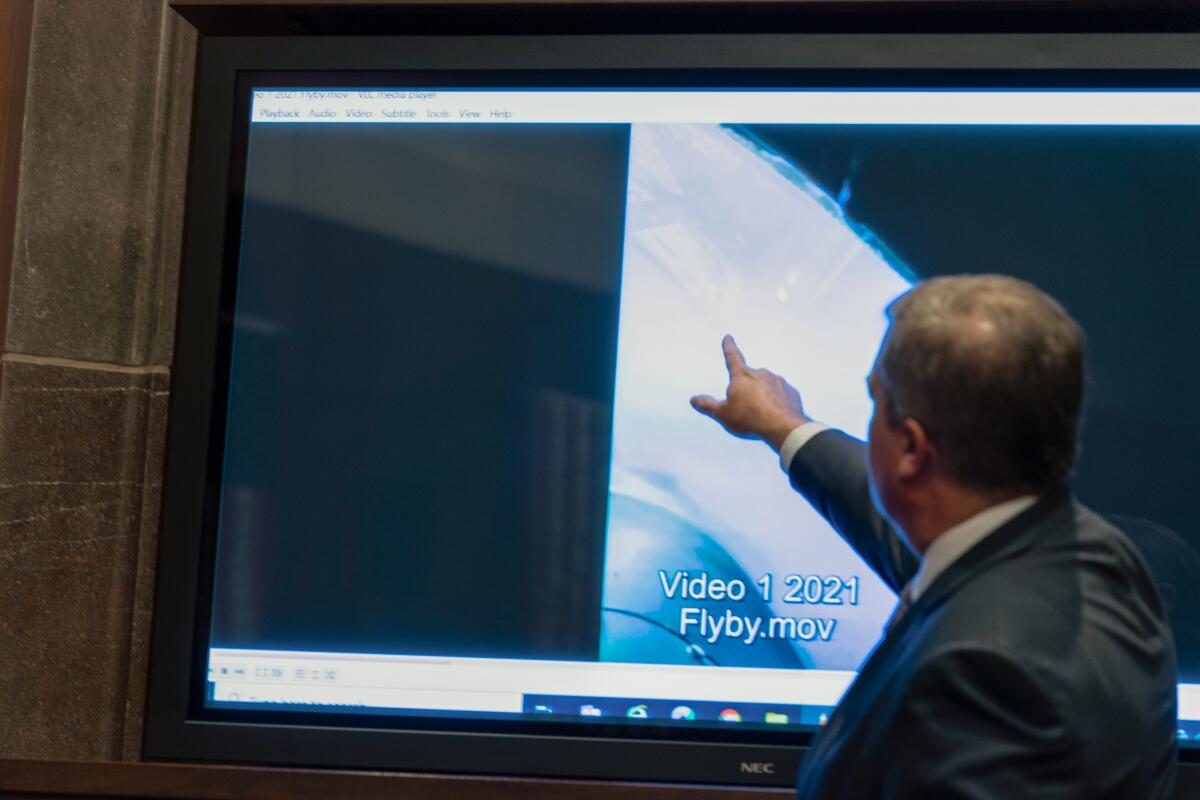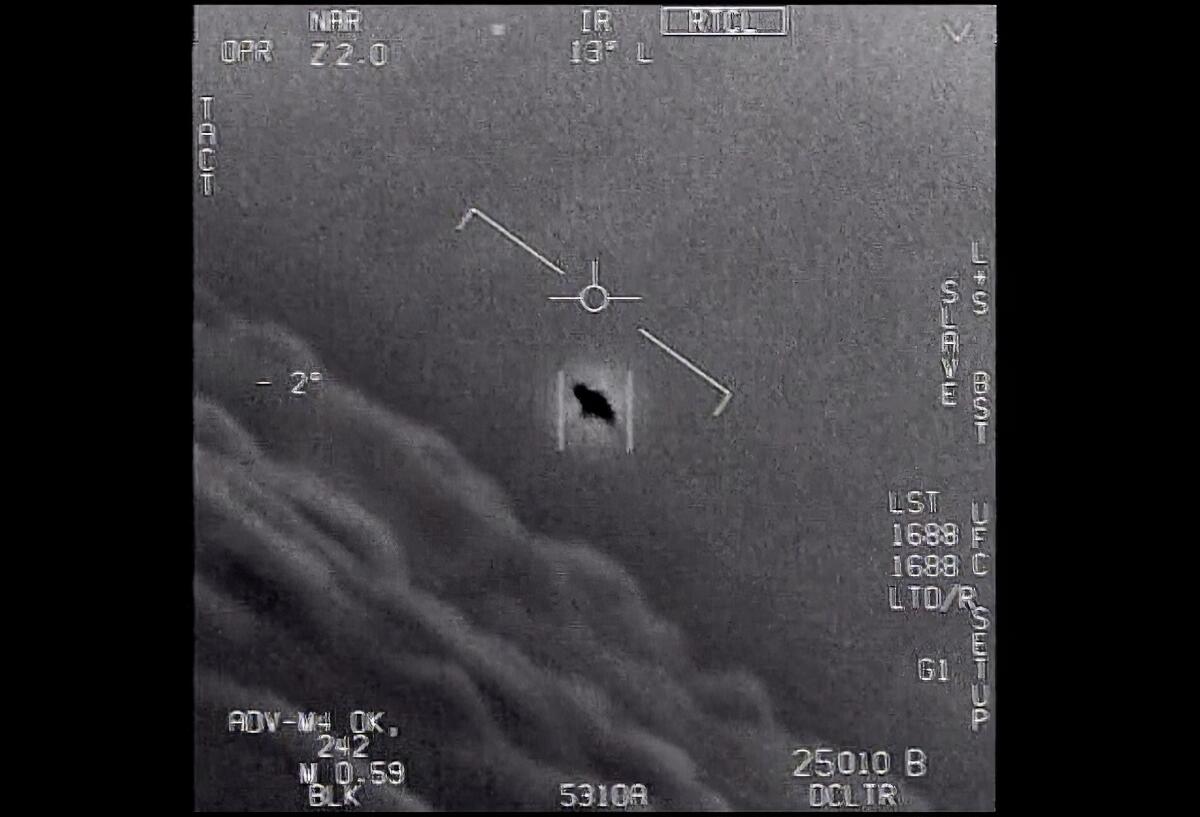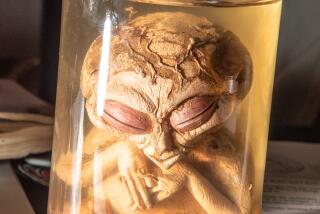Spot a UFO? The Pentagon wants to know

WASHINGTON — If you see an unidentified flying object in the air, let the Pentagon know — and officials have promised to take you seriously.
The Defense Department wants to remove the stigma around reporting such incidents so that it can better investigate them, starting with military personnel, Pentagon officials on Tuesday told members of the House Intelligence Committee at a hearing.
“We want to know what’s out there as much as you want to know what’s out there,” testified Ronald Moultrie, a top Defense Department intelligence official. “Our goal is not to potentially cover up something, if we were to find something. It’s to understand what may be out there, examine what it may mean for us.”
The hearing focused on a Pentagon program that started in 2017 and sought to investigate reports from pilots and other military personnel who spotted what the Defense Department calls UAPs, short for “unidentified aerial phenomena” (better known to the public as UFOs, or unidentified flying objects).
This isn’t the Pentagon’s first attempt to record and investigate UFOs. The latest program follows another Pentagon effort, known as Project Bluebook, which discontinued its research about 50 years ago.

“Unidentified aerial phenomena are a potential national security threat, and they need to be treated that way,” said Rep. André Carson (D-Ind.), chairman of the Intelligence subcommittee that held the hearing, the first to examine UFOs in five decades. “For too long, the stigma associated with UAPs has gotten in the way of good intelligence analysis. Pilots avoided reporting or were laughed at when they did.”
Scott Bray, deputy director of Naval Intelligence, said that reports of such sightings are “frequent and continuous,” with more than 400 recorded by the Pentagon to date — up from the 144 reported sightings between 2004 and 2021. He attributed the rise in reports to the agency’s efforts to destigmatize the sharing of such stories.
Understanding and assessing the reports is another matter. The spontaneous and often quick nature of the incidents means that officials frequently have little data to work with.
During the hearing, Bray pointed to footage of a mysterious object zooming by a military aircraft, appearing and disappearing in the blink of an eye.
“I do not have an explanation for what this specific object is,” he said.
Lawmakers asked Bray to play and replay the video so they could catch a glimpse of the puzzling visual captured through a plane’s window.
In another video, Navy personnel documented a triangle flashing off the coast of the United States. Several years later, Navy personnel witnessed another triangle floating off a different coast in the U.S., Bray said.
“We’re now reasonably confident that these triangles correlate to unmanned aerial systems in the area. The triangular appearance is a result of light passing through the night vision goggles and then being recorded by an SLR camera,” he said. “This is a great example of how it takes considerable effort to understand what we’re seeing in the examples that we are able to collect.”
More to Read
Get the L.A. Times Politics newsletter
Deeply reported insights into legislation, politics and policy from Sacramento, Washington and beyond. In your inbox three times per week.
You may occasionally receive promotional content from the Los Angeles Times.











